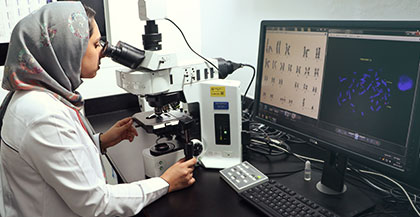Health and Safety Among Top Concerns in Choosing Childcare, Survey Finds
/When choosing a childcare or preschool, many parents try to gather information to make their decision. Yet only 54 percent of parents were very confident that they could tell if a childcare option would be safe and healthy for their child, according to a new national survey. Beyond that challenge, 2 out of 3 parents said it’s hard to find childcare options with the characteristics they want.
In selecting a childcare or preschool, parents consider a variety of health, safety, educational, or practical factors. Overall, 62 percent of parents agreed that it’s hard to find childcare options with the characteristics they want. The C.S. Mott Children’s Hospital National Poll on Children’s Health asked about these factors in a national sample of parents of children age 1-5 years who attend childcare or preschool.
Nearly half of parents reported their child currently attends preschool (48%), while the other half reported their child attends either a childcare center (25%) or in-home childcare (27%) for at least 5 hours per week. Most parents (88%) felt that childcare centers and in-home childcare providers should have the same health and safety standards. Parents selected up to 5 factors they would consider most important when choosing a childcare or preschool. The top 5 factors differed by the child’s current setting:
- Preschool: staff background checks (45%), active play every day (40%), doors locked (38%), staff have early childhood training (30%), and safe outdoor play area (30%)
- Childcare center: staff background checks (46%), staff have early childhood training (42%), doors locked (36%), cost (33%), and location/hours (32%)
- Home childcare: healthy foods served (28%), active play every day (28%), books/educational toys (27%), kitchen area cleaned (26%), and staff background checks (24%)
Connecticut’s Office of Early Childhood provides information on its website, including a “Child Care Checklist for Parents,” to assist in choosing a child daycare program. It suggests asking if the program is licensed, ensuring that unannounced visits are permitted, that there is adequate staff and that the program is safe. The website also includes an “online lookup tool” to determine licensing status for family child care home providers, group child care homes, child care centers, family child care home staff-substitutes and assistants and youth camps.
A report published last month by Connecticut Voices for Children indicated that for more than a decade, Connecticut has made expanding early care and education programs and
wrap-around supports a priority. The state has increased funding for early childhood programs for low-income families and communities,"making a real, sustained effort to build a strong infrastructure to support the early childhood system. Increased spending has increased both the availability and the quality of care." Those efforts, the study found, "have begun to pay off in terms of both access and quality of care." 
The 39-page report indicated that: • Almost four in every five four-year-olds enroll in preschool. As of 2016, nearly 80% of four-year-olds were enrolled in preschool, an increase of six percentage points since 2005. • Disparities in preschool access have narrowed. The gap in preschool experience rates between the large urban districts and the wealthiest suburban districts has narrowed from 40 percent in 2003 to just 26 percent in 2016. • State programs are serving more infants and toddlers. Head Start and Child Day Care Centers have shifted to address more of the state’s need for infant and toddler care. Combined, they serve almost 80% more infants and toddlers in 2016 than in 2005.
The report stressed, however, that as of 2016, center-based infant/toddler care is affordable to only 25 percent of Connecticut families with a young child. Child care for two young children is affordable to only seven percent of such families. The need for infant/toddler care "continues to vastly outstrip statewide capacity," and community wealth "continues to predict both preschool access and later test scores."
In the national poll, parents identified deal-breakers in selecting childcare – characteristics that would eliminate a preschool or childcare from their consideration. Over half said location in a sketchy area or a gun on the premises would be a deal-breaker; others were: non-staff adults on the premises, unvaccinated children allowed to attend, and having a staff person who smoked.
Some factors rated as most important by the Mott Poll parents may be reflected in the policies of the facility. These include whether staff undergo background checks prior to hiring, whether staff have early childhood certification or training, and whether child and staff members must be vaccinated. For many preschools and childcare centers, this type of information can be found on the facility’s website; it may be more difficult to find such information for in-home childcare providers, the poll analysis pointed out.










 Connecticut’s “An Act Concerning the Strengthening of School Bullying Laws,”
Connecticut’s “An Act Concerning the Strengthening of School Bullying Laws,”  Testifying in support of the Connecticut legislation, state Victim Advocate Michelle Cruz said “we now know the long lasting and devastating effects that bullying behavior can have on victims, bystanders and even bullies.” She cited a study by the Family and Work Institute that reported one-third of children are bullied at least once a month, while six out of ten teens witnessed bullying at least once a day.
Testifying in support of the Connecticut legislation, state Victim Advocate Michelle Cruz said “we now know the long lasting and devastating effects that bullying behavior can have on victims, bystanders and even bullies.” She cited a study by the Family and Work Institute that reported one-third of children are bullied at least once a month, while six out of ten teens witnessed bullying at least once a day.
 The new program will be delivered by entrepreneurs in classrooms, after-school facilities, and other student venues across the United States, beginning this month. Entrepreneurs are given the opportunity to connect with students, provide relevant information about their company and entrepreneurial journey, and share advice and next steps for students who are interested in starting their own business.
The new program will be delivered by entrepreneurs in classrooms, after-school facilities, and other student venues across the United States, beginning this month. Entrepreneurs are given the opportunity to connect with students, provide relevant information about their company and entrepreneurial journey, and share advice and next steps for students who are interested in starting their own business. "Entrepreneurs are the driving force behind growth and positive change, and at EY we believe it is vital to help enable our future generation of innovators," said Randy Cain, Vice Chair and Southwest Region Managing Partner, Ernst & Young LLP, and JA USA board member. "Creative, hands-on programs such as JA Launch Lesson are critical to providing our youth with the tools, information and resources necessary to succeed when starting their own business."
"Entrepreneurs are the driving force behind growth and positive change, and at EY we believe it is vital to help enable our future generation of innovators," said Randy Cain, Vice Chair and Southwest Region Managing Partner, Ernst & Young LLP, and JA USA board member. "Creative, hands-on programs such as JA Launch Lesson are critical to providing our youth with the tools, information and resources necessary to succeed when starting their own business."


 The mission of the Jordan Porco Foundation, a 501(c) (3) public charity, is to prevent suicide, promote mental health, and create a message of hope for young adults. They accomplish this by providing engaging and uplifting peer-run programs. Their programs strive to start a conversation about mental health that reduces stigma while encouraging help-seeking and supportive behaviors.
The mission of the Jordan Porco Foundation, a 501(c) (3) public charity, is to prevent suicide, promote mental health, and create a message of hope for young adults. They accomplish this by providing engaging and uplifting peer-run programs. Their programs strive to start a conversation about mental health that reduces stigma while encouraging help-seeking and supportive behaviors.
 On the Southern Connecticut State University Owls, a Division ll men’s basketball team, five Connecticut student- athletes have made their way onto the 13 player
On the Southern Connecticut State University Owls, a Division ll men’s basketball team, five Connecticut student- athletes have made their way onto the 13 player 
 Michelle Hargrave, Deputy Director at the NBMAA, said, "The New Britain Museum of American Art is thrilled to partner with CRIS Radio in this endeavor to bring greater accessibility to the institution. The Museum is committed to being a welcoming, dynamic, distinguished, and educationally ambitious art museum, and we are very excited that this opportunity will open our galleries to a broader audience."
Michelle Hargrave, Deputy Director at the NBMAA, said, "The New Britain Museum of American Art is thrilled to partner with CRIS Radio in this endeavor to bring greater accessibility to the institution. The Museum is committed to being a welcoming, dynamic, distinguished, and educationally ambitious art museum, and we are very excited that this opportunity will open our galleries to a broader audience."

 A synthetic turf study was undertaken in 2016 by four United States agencies — EPA, Consumer Products Safety Commission, the Centers for Disease Control and Prevention/Agency for Toxic Substances and Disease Registry — which has yet to be finalized.
A synthetic turf study was undertaken in 2016 by four United States agencies — EPA, Consumer Products Safety Commission, the Centers for Disease Control and Prevention/Agency for Toxic Substances and Disease Registry — which has yet to be finalized. Blumenthal first became concerned about the artificial surface when his children were playing on the crumb-rubber athletic fields. “I became concerned as a parent, as much as a public official, ten years ago, and at first was somewhat skeptical, but now very firmly believe that we need an authoritative, real study about what’s in these fields,” Blumenthal told ABC News two years ago.
Blumenthal first became concerned about the artificial surface when his children were playing on the crumb-rubber athletic fields. “I became concerned as a parent, as much as a public official, ten years ago, and at first was somewhat skeptical, but now very firmly believe that we need an authoritative, real study about what’s in these fields,” Blumenthal told ABC News two years ago.



























